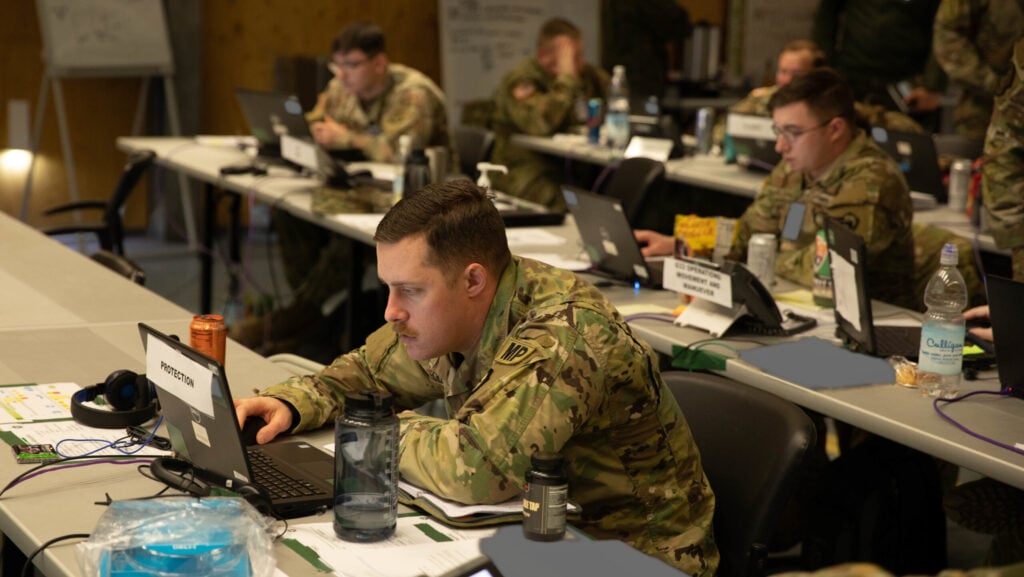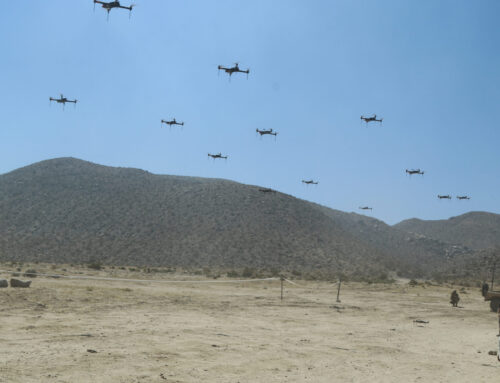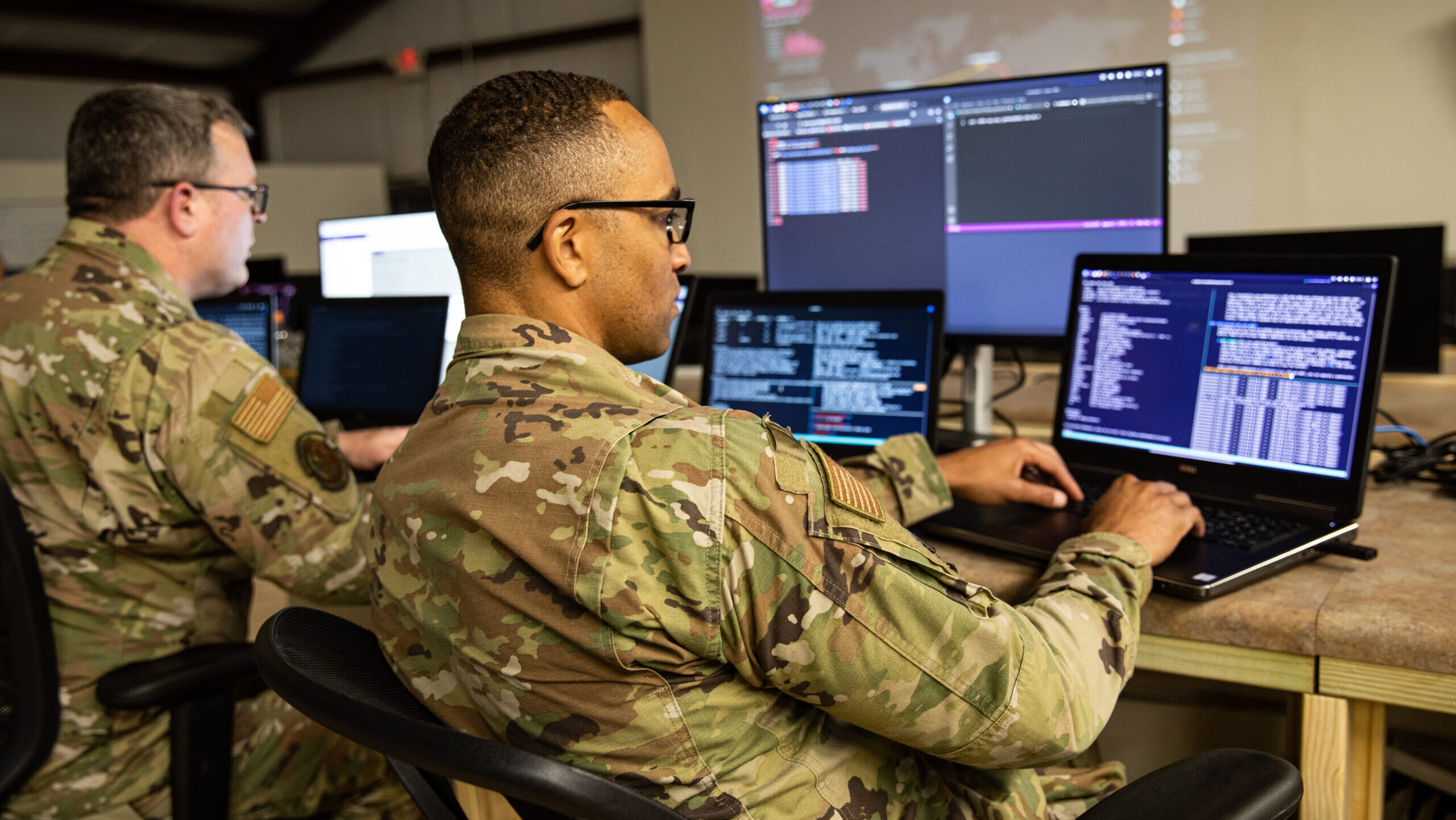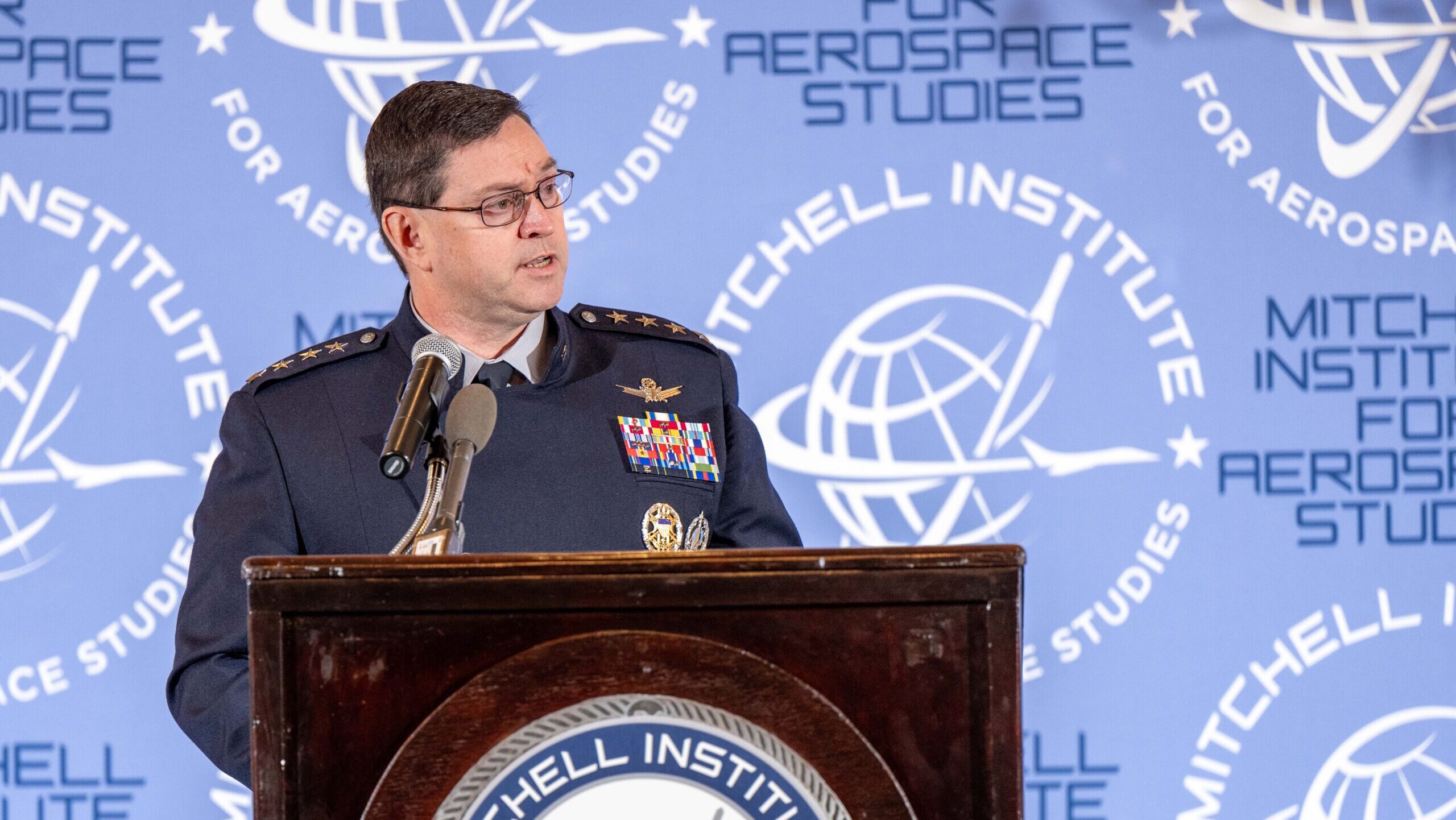US Army Capt. Michael Holder, a military police officer assigned to V Corps, analyzes a computer during Allied Spirit at US Army Garrison Bavaria Grafenwöhr on March 6, 2023. (US Army photo by Pfc. Myenn LaMotta)
EUROSATORY 2024 — A top NATO official said today that while the alliance is already incorporating open source intelligence into its work, the alliance needs to undergo a more dramatic “cultural change” in how it views OSINT amid the explosion of publicly available data relevant to military operations.
OSINT “is a source of information that the military community at large in the West has dismissed for many, many years, thinking that information is untrustworthy, thinking that it has been manipulated,” Maj. Gen. Matthew Van Wagenen, deputy chief of staff for operations at NATO, said on a panel dedicated to open source information here at the Eurosatory defense expo in Paris.
Van Wagenen, an American two-star whose responsibilities include “monitoring the strategic environment,” said he believed up to 90 percent of “what Western militaries are looking for, it can be gleaned out of open source, very, very cleverly.” Therefore NATO must “go through a cultural change on how we process information, how we get it to decision-makers out there and how we look at things.”
RELATED: Outgoing Dutch PM Rutte set to become new NATO Secretary General
He called for NATO to take advantage of technological tools in the open source information industry, but also to focus on retraining its personnel to be open to the careful use of public information for sensitive work that’s been historically the remit of classical — and classified — intelligence.
“This is a revolution in how we look at information. The ways of discerning information through classical means and techniques, tactics and procedures that militaries have been adapted to — that’s really an old model of doing business. The new open source that’s out there right now, and the speed of information and relevance of information is coming, this is how things need to be looked at.”
Van Wagenen acknowledged there’s a “level of risk” to using open source info, considering its vulnerability to be mis- or disinformation, but he said that’s where proper collection and analytical training comes in, and he highlighted the current risk of ignoring crucial info in the public sphere because of historical bias.
He also said he wasn’t calling for doing away with classical intelligence, but finding a way to “balance” the two. “There’s a piece of that, that will never go away,” he said.
“But the open source piece of this in order to make military decisions, yes, it’s absolutely applicable to the contemporary operating environment. It’s how do we integrate the two,” he said.
In the Intelligence Community (IC) especially, he said, there can be some pushback and some level of discomfort with embracing OSINT, considering intelligence agencies have been classically trained to collect secret information for decades.
That’s not to say that the IC, especially in the United States, isn’t trying to harness the explosion of public data that aids in intelligence collection. In March, the Office of the Director of National Intelligence released its first “IC OSINT Strategy 2024-2026” at what CIA Director and OSINT Functional Manager Bill Burns called a “pivotal moment” when the intel “informs the decisions of senior policymakers on nearly every major issue facing the United States.”
RELATED: US intelligence needs ‘professional cadre’ for OSINT to replace ‘amateur’ IC analysts
That same month Jason Barrett, the IC-wide open source intelligence executive at ODNI, said the US needs to work better with industry on the problem.
“We have to change our model, our approach, our way of obtaining information, our way of purchasing information,” Barrett said. “It’s not up to the commercial sector at this point to come to us. It’s up to the government to start to change how we do our business.”
Some additional coverage from Eurosatory 2024:
Ukrainian units want more sneaky battlefield e-scooters, Latvian firm says
French army demos MBDA’s AI-powered anti-armor add-on, firm unveils new cruise missile
Red Cat unveils low-cost ‘family’ of small ISR, strike drones
Switching course: Unhappy with options, US Army considers developing new IFPC interceptor
KNDS debuts Enhanced Main Battle Tank tech demonstrator











